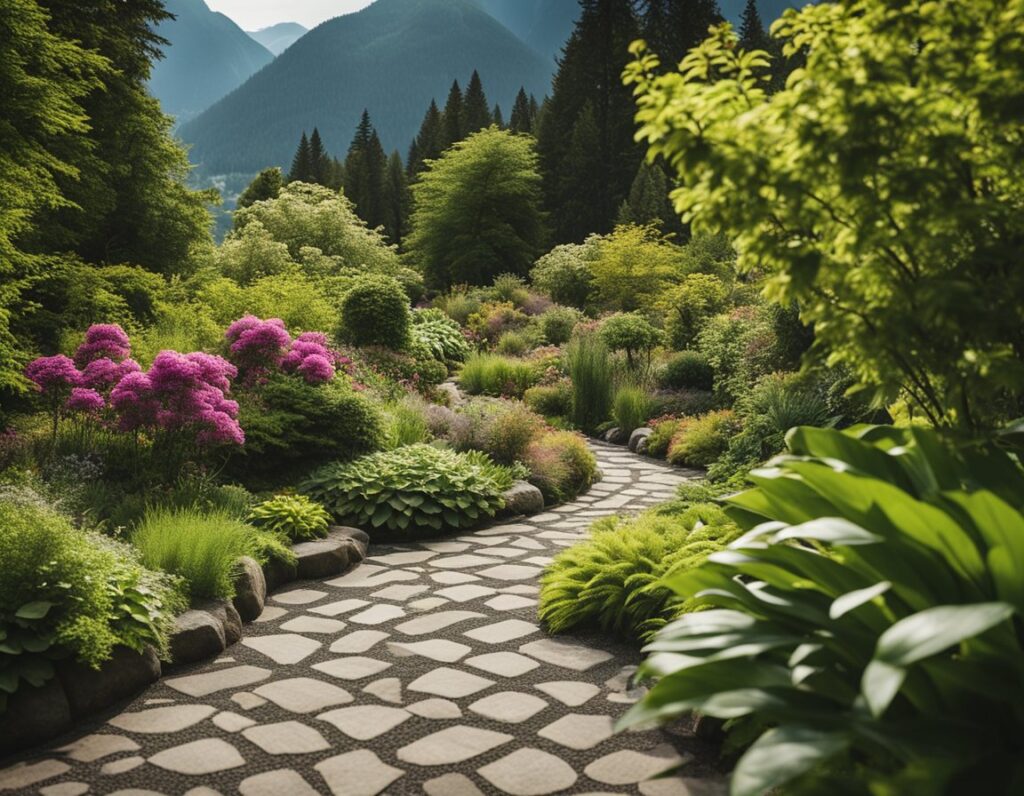
Vancouver features a moderate climate with diverse conditions that affect gardening and outdoor activities. Knowledge of local hardiness zones can help you select plants that thrive in the region.
British Columbia encompasses a range of hardiness zones, specifically from Zone 1b to Zone 10b. Vancouver typically falls within Zone 8, where winter temperatures average between 10°F to 20°F. Understanding these zones is crucial for successful planting, especially if you’re considering options like Marijuana Seeds Vancouver.
The cool maritime climate results in mild winters, but summer heat can reach warmer temperatures that stress certain plants. In Vancouver, you may encounter micro-climates. For example, downtown areas may be warmer than nearby suburbs.
Selecting plants rated for Zone 8a or lower can enhance their chances of thriving during winter months. Check local recommendations and consider factors like sun exposure and soil type to optimize your growing conditions for the best outdoor growing Vancouver.
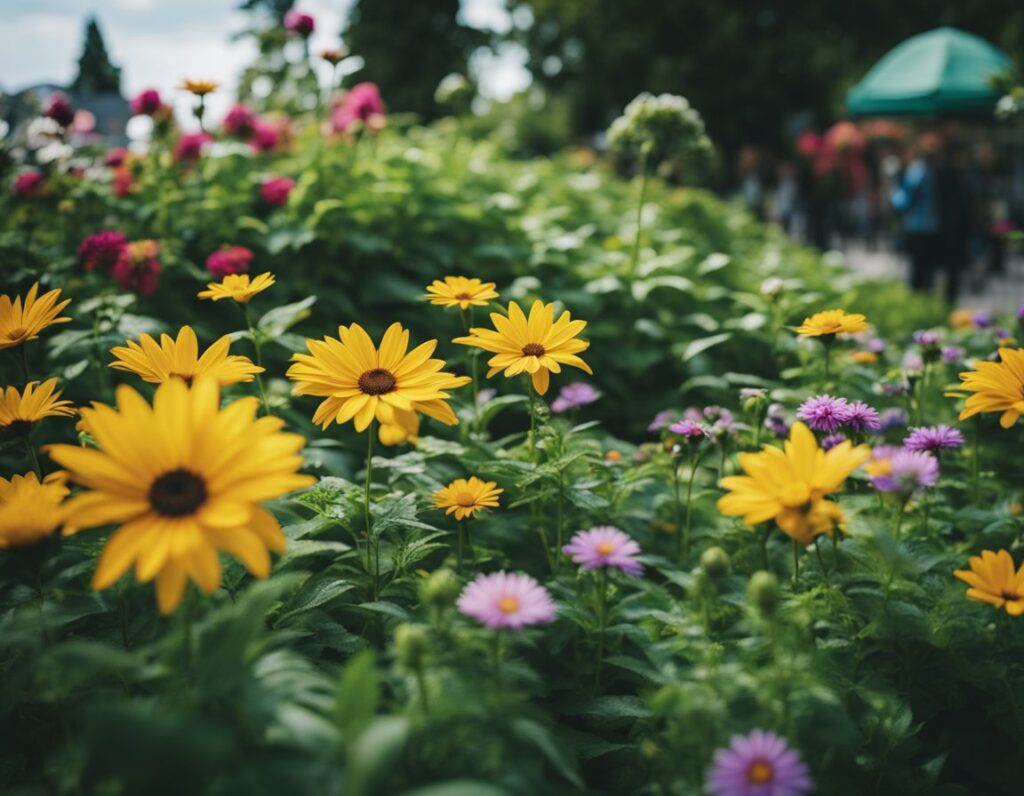
In Vancouver’s unique climate, selecting the right plant species is essential for successful gardening. A mix of trees, shrubs, flowers, and crops can enhance your outdoor spaces while thriving in the local environment.
When choosing trees, consider options like Western Red Cedar, which is native to the Pacific Northwest and provides excellent shelter. Garry Oak is another beautiful choice, known for its twisted branches and adaptability to local soils.
For ornamental purposes, Kousa Dogwood offers stunning seasonal blooms and can tolerate wet conditions. Black Tupelo is also drought-resistant, changing colors beautifully in autumn.
These species not only enhance the aesthetic of your garden but also support local wildlife, making your outdoor spaces more vibrant.
Opt for shrubs that are well adapted to Vancouver’s climate, such as Spirea. This hardy plant produces clusters of flowers and requires minimal maintenance.
Salal is another great choice, providing lush green foliage and resilience against varying moisture levels. For flower gardens, consider using Pacific Bleeding Heart. Its delicate, heart-shaped blooms thrive in shaded areas.
Sword Fern grows well in damp conditions and adds a lush, green texture to your garden. Incorporating these species fosters local biodiversity, supporting bees and other essential pollinators.
When planning your vegetable garden, start with kale, which is robust and thrives in cooler weather. Lettuce is another suitable choice, growing quickly and offering multiple harvests throughout the season.
For summer crops, tomatoes and squash flourish in the warmer months, while cucumbers grow well in sunny conditions. Cabbage can also withstand the local climate and provides nutritious additions to your meals.
Consider planting these crops in raised beds to promote better drainage and soil temperatures. This method enhances growth and ensures a productive garden.
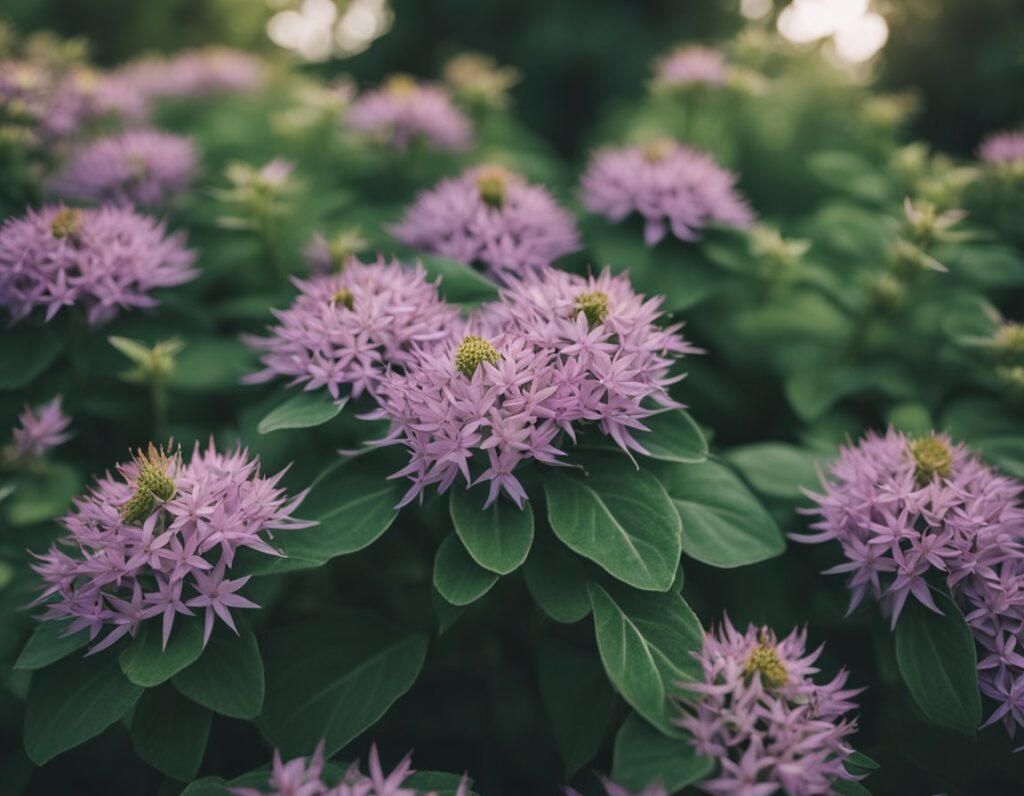
Identifying the right locations for different plant types is essential for successful gardening. This involves considering factors like sunlight, soil quality, and access to water. Understanding the specific needs of flowers, vegetables, and herbs will guide your gardening efforts effectively.
When selecting areas for flower gardens, prioritize locations that receive full sun for at least six hours a day. This is crucial for blooming. Queen Elizabeth Park and the Rose Garden are excellent choices due to ample sunlight and rich soil.
In contrast, some flowers, such as ferns and hostas, thrive in partial shade. For these, consider spots near larger trees or structures that provide dappled sunlight. Bloedel Conservatory offers attractive shade options and a unique environment that supports a variety of flowering plants. Using raised garden beds can improve drainage and soil quality, catering to the specific needs of your chosen flowers.
Vegetables and herbs typically require at least six to eight hours of direct sunlight daily. Place your garden in open areas with minimal obstructions like large trees or buildings. UBC Botanical Garden showcases many successful vegetable plots due to its sunny microclimates.
Choose locations with well-draining soil, as many vegetables, including tomatoes and peppers, prefer it. Conduct a soil test to check pH levels and nutrient content, enhancing your gardening success. Additionally, consider implementing raised garden beds to ensure better drainage and to keep soil warm during cooler months. Think about companion planting strategies to maximize your vegetable and herb yield, making the most of your outdoor space.
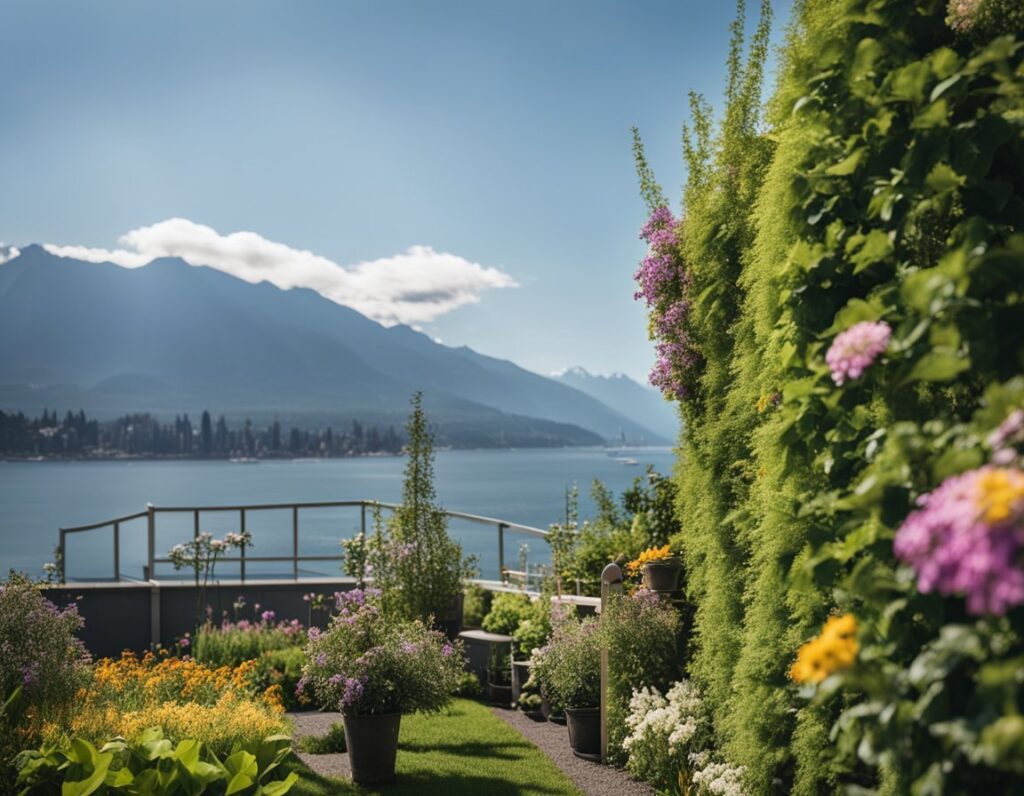
Creating a vibrant outdoor garden involves integrating structures that support plant health and inviting pollinators for a thriving ecosystem. Utilizing raised beds and promoting pollinator-friendly practices can enhance both aesthetics and productivity.
Raised garden beds are an effective way to maximize space, particularly in urban environments where land is limited. They allow for better drainage and soil control, which can improve crop yields. You can customize their height and size to suit your gardening needs.
Incorporating materials like wood or stone for your raised beds provides stability and can enhance the visual appeal of your garden. The use of these beds supports urban farming initiatives, allowing you to grow vegetables and herbs in a city setting. Raised beds also make gardening accessible for individuals with mobility challenges, offering an inclusive gardening experience.
Attracting pollinators is crucial for maintaining healthy gardens. You can achieve this by planting native flowering plants that provide nectar and pollen. Consider species such as lavender, coneflowers, and bee balm, as they are particularly attractive to bees and butterflies.
In addition, creating nesting sites, such as bee houses or leaving bare patches of soil, encourages native bees to settle in your garden. Implementing practices like mulching with organic materials can also help retain moisture, benefiting both plants and pollinators alike.
Joining community initiatives, such as the City of Vancouver’s Green Streets Program, allows you to connect with others committed to pollinator-friendly practices. Your efforts will contribute positively to local biodiversity while enriching your garden’s environment.
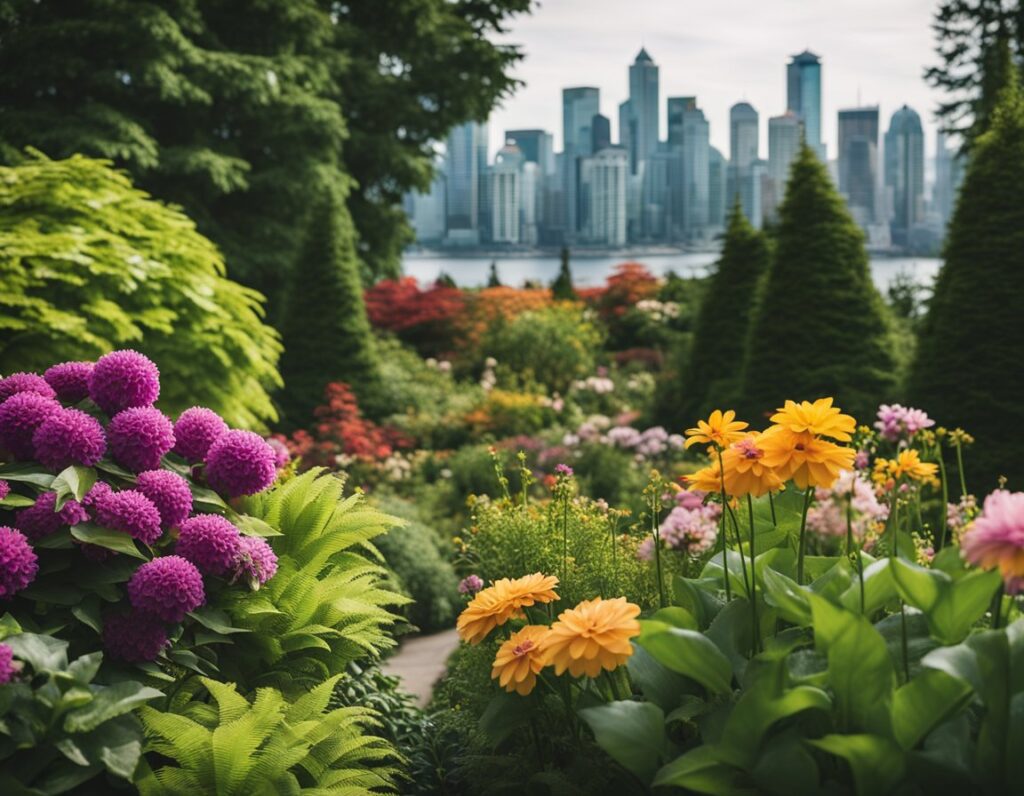
Public gardens and conservatories in Vancouver showcase a variety of plant species and unique landscapes. They offer both aesthetic pleasure and educational opportunities for gardening enthusiasts. Here are some of the key highlights to consider.
Vancouver is home to several notable public gardens that provide vibrant displays of flora. VanDusen Botanical Garden features more than 7,500 plant species across 55 acres, making it a prime spot for horticulture lovers. You can enjoy thematic sections like the Mediterranean Garden and the Elizabethan Maze.
Stanley Park offers a different experience with its Rose Garden, featuring over 3,500 rose bushes and stunning views of the city skyline. Meanwhile, the UBC Botanical Garden spans 44 hectares and focuses on plant collections from around the world, including an impressive selection of native species.
The Dr. Sun Yat-sen Classical Chinese Garden balances tranquility with horticultural beauty, presenting a harmonious blend of architecture and landscape. Don’t miss the Nitobe Memorial Garden, recognized as one of the most authentic Japanese gardens outside Japan, showcasing seasonal changes through carefully curated plants.
In addition to public gardens, Vancouver boasts remarkable conservatories and specialty gardens. The Bloedel Conservatory stands out as a unique glass-domed structure located in Queen Elizabeth Park. Inside, you’ll find exotic plants from tropical climates alongside colorful free-flying birds.
The Horticulture Centre of the Pacific features extensive demonstration gardens, including Canada’s largest outdoor bonsai garden. Here you can learn about sustainable gardening practices and see rare plant species in conservation areas.
These gardens and conservatories not only provide a place for exploration but also serve as excellent resources for learning about diverse gardening techniques and plant care.
In this section, you’ll find detailed answers to commonly raised queries about outdoor growing locations around Vancouver. Each question addresses specific interests and information relevant to local horticulture and tree cultivation.
The Greater Vancouver area boasts several prime locations for outdoor gardening. Areas like the Lower Mainland provide fertile soil and a mild climate. Local parks and community gardens, such as VanDusen Botanical Garden, offer excellent growing conditions and resources.
Vancouver Island’s coastal regions, particularly in communities like Sooke and Port Renfrew, are ideal for growing giant sequoias. The temperate climate and nutrient-rich soil create a favorable environment for these majestic trees to thrive.
The coastal rainforests of British Columbia, especially along the Pacific Rim National Park, are renowned for their impressive redwood trees. These areas provide the necessary moisture and mild temperatures that encourage healthy growth.
The oldest and tallest trees in Vancouver can be found in Stanley Park. The park is home to several towering Douglas firs and western red cedars, some exceeding 1,000 years in age. These trees contribute to the urban forest’s beauty and biodiversity.
For the Vancouver climate, consider raised garden beds with well-draining soil to promote healthy root growth. Using a mix of native plants and vegetables can also enhance resilience against local pests. Incorporating a greenhouse can extend the growing season as well.
We ship and deliver world wide via USPS and various couriers.
We offer a wide range of secure and anonymous online payment options.
We care about you, our customer. Please contact us with any questions or concerns.
Find out more about the benefits of being a loyal and regular customer.
WE ARE EVERY GROWERS ONE STOP SHOP TO ACQUIRE PREMIUM CANNABIS SEEDS FOR SALE IN THE USA, CANADA AND AUSTRALIA

Farmers Lab Seeds 2024, | All Right Reserved
Seeds are sold as novelty items, souvenirs, and collectibles. They contain 0% THC. We encourage our customers to check the legislation in their Country, State, Province, and Municipality prior to purchasing items from our store. We do not provide growing information.
All seeds are sold as hemp, and lab tested under 0.3% THC. This product is not for use by or sale to persons under the age of 21. This product should be used only as directed on the label. It should not be used if you are pregnant or nursing. Consult with a physician before use if you have a serious medical condition or use prescription medications. A Doctor’s advice should be sought before using this and any supplemental dietary product. All trademarks and copyrights are property of their respective owners and are not affiliated with nor do they endorse this product.
These statements have not been evaluated by the FDA. This product is not intended to diagnose, treat, cure or prevent any disease. Individual weight loss results will vary. By using this site, you agree to follow the Privacy Policy and all Terms & Conditions printed on this site. Void Where Prohibited by Law.